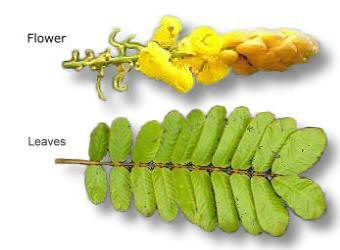 |
||
|
Home 10 DOH Herbs Adelfa Akapulko Ampalaya Balanoi Banaba Bayabas Bawang-Garlic Carrot | Karot Luyang Dilaw Gumamela
Insulin Plant |
Philippine Herbal Medicine: Akapulko / Acapulco (Cassia Alata) |
|
|
|
||
|
Benefits & Treatment of Akapulko:
• External Use: Treatment of skin diseases: |
Preparation & Use:
• For external use, pound the leaves of
the Akapulko plant, squeeze the juice and apply on affected areas. |
|
|
It should be noted that the pounded leaves of this plant may be applied thinly on the affected part twice a day. Marked improvement may be expected after two to three weeks of continuous application to the affected area(s) where the prepared Akapulko leaves were applied. |
||
|
|
||
Other Herbal & Non-Herbal Medicine: Philippine Plants, Fruits & TreesAbaca Plant | Avocado | Atis Fruit | Banana Plant | Barako Coffee | Coconut Palm Tree | Durian Fruit | Guyabano Fruit | Mango Tree | Mangosteen | Papaya Nutrition Facts | Pineapple Nutrition Fact | Rubber Tree | Tomato Nutrition | Tuba-Tuba Plant - Jatropha Key to Nutritional Healing | Philippine Medicinal Plants List |
||
|
Philippine Herbal Medicine © 2005-2025 |
||
 Akapulko or Acapulco in English is a shrub found
throughout the Philippines. It is known under various
names in
different regions in the country. Locals call the plant katanda,
andadasi, and palochina in Tagalog, Ilocos and in the Visayas regions,
respectively. The shrub belongs to the family of Leguminosae, and
grows about one to two meters tall. It has thick branches and the
leaves are embraced with 8 to 20 leaflets that are oblong-elliptical
in shape. The flowers of the Akapulko have oblong sepals, and its
fruits are tetragonal, which are also winged and glabrous. A medicinal
herb that contains chrysophanic acid, a fungicide used to treat fungal
infections, like ringworms, scabies, and eczema. Akapulko also contains
saponin, a laxative that is useful in expelling intestinal parasites.
Akapulko or Acapulco in English is a shrub found
throughout the Philippines. It is known under various
names in
different regions in the country. Locals call the plant katanda,
andadasi, and palochina in Tagalog, Ilocos and in the Visayas regions,
respectively. The shrub belongs to the family of Leguminosae, and
grows about one to two meters tall. It has thick branches and the
leaves are embraced with 8 to 20 leaflets that are oblong-elliptical
in shape. The flowers of the Akapulko have oblong sepals, and its
fruits are tetragonal, which are also winged and glabrous. A medicinal
herb that contains chrysophanic acid, a fungicide used to treat fungal
infections, like ringworms, scabies, and eczema. Akapulko also contains
saponin, a laxative that is useful in expelling intestinal parasites.